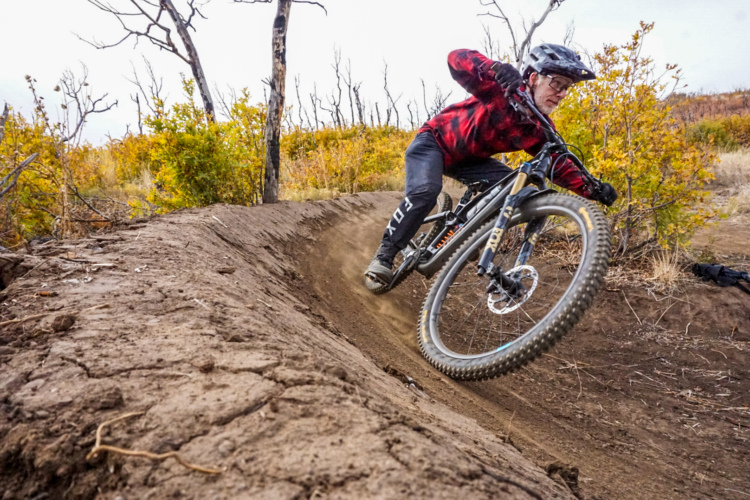
Look at that sweet motorcycle outside, with its sexy stanchions peeking just above the axle. “Upside-down” forks as they’re often called are not new to the two-wheeled world, and several brands have designed products with this configuration over the years. To name a few: BC Intend started with their lower stanchions showing, Manitou has produced a number of solid upside-down models over the years, and RockShox kicked out the RS1 cross country squishers with their proprietary hub for a short while.
Pablo Fiorilli of Bright Racing Suspension saw some unique possibilities with the flipped fork and set his long history of engineering know-how to work in the interest of better traction and support. He’s been in the squish business on the moto side since 1989 and had a strong feeling that the bike industry could benefit from a new approach.
When Fiorilli hopped back into mountain biking several years ago he found himself unimpressed with the way modern consumer forks work for folks who are pushing hard. Most forks are designed with more comfort than performance in mind, and the only alternative to that situation for aggressive athletes is to hand over another pile of cash to have your new fork race tuned. Given this situation, Fiorilli set out to make forks just for racers with a keen focus on providing the support and stability they need at maximum speed. He says that Bright Forks maintain that ethos today, and each one is built around the specific pilot’s details and preferences.
Of course, there are disadvantages to every system, so let’s get those out of the way. Some flipped forks have been described as “flexy,” not providing enough lateral nor linear stiffness for aggressive riding. Another stated disadvantage is that the stanchions are closer to the rocks and roots that will scratch them. If moto folks Like Johnny Walker, who competes in Red Bull’s Hard Enduro, can manage with an inverted setup, we might find a way to protect the stanchions with these lightweight mountain bikes. A third potential issue is that any oil leakage at the fork seal could quickly spell disaster for the brake rotor. Fortunately, seals are pretty dialed these days, and we rarely see issues with leaks large enough to cause problems.

On the positive side, flipped forks allow for the system’s oil to sit closer to the fork’s seals, keeping things better lubed than it would if required to splash upward. Fox added channels to the backside of their forks a couple of seasons ago to increase oil flow to the seals and wipers, but imagine how good it would be if gravity had already sorted that all out. Gravity and oil flow also allows for different damper configurations inside the fork, freeing up some creative layouts for the compression and rebound circuits.
According to Fiorilli, another advantage of an upside-down fork like this one flies in the face of its stated disadvantage: stiffness. With massive carbon fiber upper-tubes attached to the crown, he says that he’s able to tune the fork components so that it offers more compliance at full extension to better track the ground, and becomes increasingly stiffer as the stanchions are compressed. In theory, that should make for a fork that feels great on chattery bumps, and stalwart in the really rough stuff.

In addition to the above advantages, Fiorilli wanted to focus on dynamic ride height with his forks. The way modern telescoping forks use 25-30% of their travel with static-sag seemed unnecessary to him, so he designed the Bright forks to remain supple off the top with just 5-15mm of static sag, which he claims allows for a higher overall ride height (similar to what’s called dynamic-sag) and a more supportive ride. With that improved posture, Bright recommends using a fork with 20mm less travel in order to achieve the same dynamic sag level and similar axle-to-crown lengths after sag. So, if you hop on your bike with a 170mm fork and have one axle-to-crown measurement with sag, Fiorilli claims you can achieve a similar measurement with better support on his 150mm fork.
All of the Bright Racing Suspension forks are made in Italy, with nearly all of the small parts coming from around the Italian peninsula. Fiorilli tests products and refinements with local Italian racing teams for both XC and enduro products, and the home shop allows him to make adjustments whenever needed. We will be testing the 150mm Next fork over the winter and spring months, so stay tuned for a full review of all things flipped.












4 Comments
Jan 28, 2022
Feb 3, 2022
The Maverick DUC32 and SC32 forks are still being used on many different wheel sizes, stiffer than the RS1, highly tuneable since day one, and about 95% of the parts are still available.
Jan 28, 2022
Mar 3, 2022